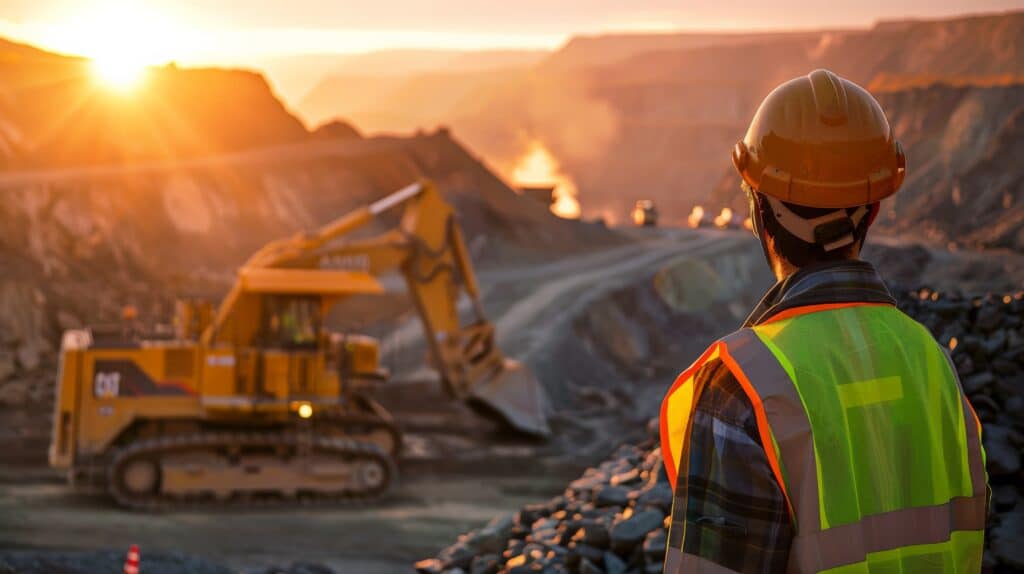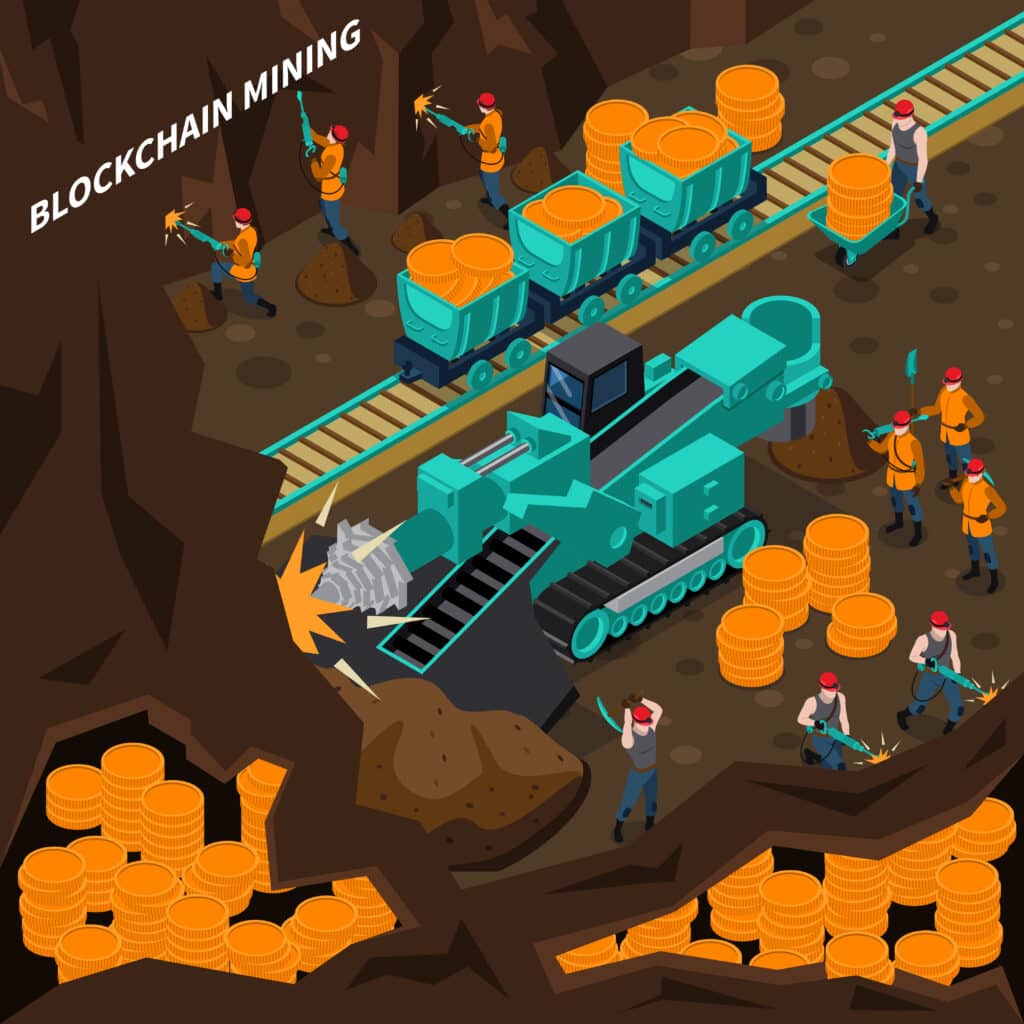In the mining industry, every moment of operation counts when it comes to productivity and profitability. Predictive maintenance is an essential pillar in this context.
It is clear that in the mining sector, optimising processes and reducing downtime remain absolute priorities. Equipment reliability remains unquestionably crucial for companies operating in this field. Their ability to respond to growing market demand and to keep their operations running relies heavily on this reliability.
It is in this context that this article explores how predictive maintenance can revolutionise the mining industry by improving efficiency and reducing costs. The Altair Enterprise and Themis QHSE CMMS solutions have been designed to respond precisely to the demands of the mining and extractive industries.

Developments in the mining industry
The mining industry has undergone a remarkable evolution, from its beginnings in ancient times to the present day. The industrial era marked a major expansion, introducing new technologies and extraction methods. The 20th century saw significant advances in safety and environmental protection. The 21st century saw the emergence of more sustainable and socially responsible mining practices.
In a world where precision and efficiency are paramount, mining has become a highly mechanised and regulated industry. Mining companies rely on cutting-edge technologies to optimise their operations while reducing their environmental impact. In this demanding context, predictive maintenance is emerging as an essential tool for optimising performance and reducing costs.
The Challenges of Mining
Sometimes, mines and work sites are located in remote areas where access to resources, whether human or material, is difficult. This unique characteristic gives rise to major problems such as :
- Logistics: Transporting large equipment, materials and supplies to remote sites can be complicated and costly. It requires careful planning and the development of transport infrastructure tailored to the needs of the mine, which can require considerable investment.
- Staffing: Recruiting and retaining skilled workers in remote areas can be a major challenge. Providing accommodation, catering and safe and pleasant working conditions for employees can be challenging in these isolated environments.
- Communication: Remote areas can suffer from limited or non-existent network connections, making communication between different sites and with the outside world difficult. This can lead to delays in transmitting critical information and coordinating activities.
- Safety: Remote regions are often subject to extreme geographical and weather conditions, which increases the safety risks for workers. In addition, the remoteness of emergency services can complicate rescue operations in the event of an incident.
Faced with these challenges, mining companies need to develop robust resource management, logistics and communications strategies to ensure smooth and secure operations in remote areas.
CMMS and Predictive Maintenance in Action
Computer-aided maintenance management system (CMMS) is revolutionising maintenance in the mining industry by enabling efficient planning, spare parts management and traceability of interventions thanks to sophisticated computerised systems. By centralising data and automating processes, a CMMS provides complete visibility of equipment status, enabling informed decision-making to optimise resource availability.
Predictive maintenance is based on the use of real-time data and advanced algorithms to anticipate potential equipment failures. This approach gives operators the flexibility to act according to the reality on the ground, rather than following a fixed schedule. By carefully monitoring performance and identifying the first signs of malfunction, this approach enables preventive action to be taken before a breakdown occurs. This avoids unplanned, costly stoppages and emergency repairs, helping to keep operations running smoothly and the team productive.
- Reducing downtime: In mining, every minute of unplanned downtime can mean considerable losses. Predictive maintenance can detect potential problems before they become critical, enabling maintenance teams to intervene proactively to avoid costly downtime.
- Optimisation of resources: Rather than devoting resources to preventive maintenance operations based on fixed schedules, predictive maintenance enables resources to be allocated more efficiently. By concentrating efforts where they are really needed, operators can reduce costs while maximising equipment availability.
- Extending the life of equipment: By identifying and correcting problems at an early stage, predictive maintenance helps to extend the life of equipment. By carrying out minor repairs before they become major ones, operators can optimise the performance of their assets and delay the need for costly replacement.
- Improved safety: Equipment failures can represent a serious safety risk for workers in mines. By identifying potential problems before they endanger safety, predictive maintenance helps to create a safer working environment for everyone.

Keys to success for the mining industry
Predictive maintenance is proving to be an essential tool for ensuring the reliability and efficiency of operations. This involves not only adopting cutting-edge technologies, but also putting in place processes and practices that foster a culture of continuous improvement.
To ensure its success, a number of key factors need to be taken into account:
Quality Data Collection is the first pillar. The reliability of predictive maintenance forecasts depends greatly on the quality of the incoming data. Companies therefore need to invest in state-of-the-art sensors and reliable monitoring systems to guarantee accurate, usable data.
Next, Advanced Data Analysis is essential. Based on sophisticated algorithms, predictive maintenance requires specialised skills to interpret the results and make informed decisions. Companies must therefore ensure that they have the human resources required for this in-depth analysis.
Staff training is another crucial aspect. For predictive maintenance to be fully effective, field teams need to be trained in its use. This includes understanding the technologies involved and the ability to interpret the data for appropriate action.
Finally, integration with other systems is essential. To maximise the effectiveness of predictive maintenance, it is essential that it integrates seamlessly with other systems and processes, such as asset management and production planning. This means that companies need to ensure that all their systems can work together seamlessly.
Conclusion
Predictive maintenance is an essential pillar of the mining industry, helping to reduce downtime, optimise resources and enhance safety. Its integration into the organisational culture enables companies to remain competitive and prosper in an ever-changing market. By providing real-time data and in-depth analysis, predictive maintenance promotes informed decision-making and optimal planning of operations. What’s more, Themis QHSE Manager gives you complete control over your costs, consumption and anomalies.
Predictive maintenance is not just about equipment management for mining companies. It can also enhance mining companies’ reputation for sustainability and social responsibility. By reducing downtime and ensuring the safety of workers, they are demonstrating their commitment to the environment and the well-being of employees, a key factor in attracting investment and retaining customers.
Predictive maintenance is much more than just an equipment management tool for mining companies. It embodies a strategic approach that enables them to remain competitive, meet market demands and make a positive contribution to the sustainable development of the mining industry.

For more information about Altair’s CMMS and DSD System, contact us!



